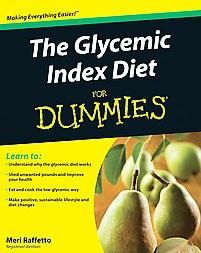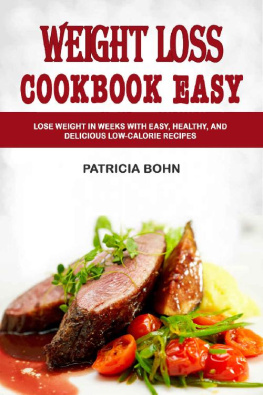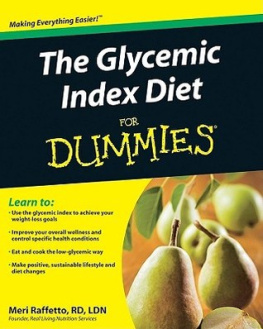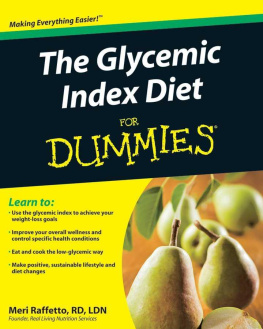500
LOW GLYCEMIC INDEX
RECIPES
500
LOW GLYCEMIC INDEX RECIPES
Fight Diabetes and Heart Disease, Lose Weight, and Have Optimum Energy with Recipes That Let You Eat the Foods You Enjoy
DICK LOGUE

Text 2010 Dick Logue
First published in the USA in 2010 by
Fair Winds Press, a member of
Quayside Publishing Group
100 Cummings Center
Suite 406-L
Beverly, MA 01915-6101
www.fairwindspress.com
All rights reserved. No part of this book may be reproduced or utilized, in any form or by any means, electronic or mechanical, without prior permission in writing from the publisher.
14 13 12 11 10 1 2 3 4 5
ISBN-13: 978-1-59233-417-9
ISBN-10: 1-59233-417-2
Digital edition: 978-1-61673-852-5
Library of Congress Cataloging-in-Publication Data available
Cover and Book design by Fair Winds Press
Printed and bound in Canada
The information in this book is for educational purposes only. It is not intended to replace the advice of a physician or medical practitioner. Please see your health care provider before beginning any new health program.
To my family, who have dealt not only with the initial illness that caused me to change my diet (and theirs), but also have been my guinea pigs for any number of recipe tests. Some of them are in this book, some werent nearly good enough.
Contents
INTRODUCTION
What Is a Low-Glycemic-Index (GI) Diet?
Perhaps youve picked up this book because youve been hearing a lot lately about the glycemic index and how it can help you eat a more healthy diet. Perhaps you or someone you care about has diabetes, so things like carbohydrates, insulin production, and blood sugar levels are a special concern. Perhaps you are trying to lose weight and are confused about all the conflicting information about carbohydrates. Or perhaps you have one of my other books and are interested in what this new one had to offer. Maybe its none of those reasons. Whatever the reason is, I can almost guarantee that there is information (and recipes!) here that will be useful to you.
I probably wouldnt have made that statement a year ago. I didnt know much about the glycemic index, other than that I thought it related to the amount of carbohydrates in food, and to be honest I wasnt very interested in it. I knew it was something that many doctors were talking about in relation to diabetic diets. But my mother had had diabetes for a number of years, and I thought from watching her and how she ate that I understood what was required to control your blood sugar level through diet. Basically she ate little or no sugar. She also was careful about not eating too many other carbohydrates, but not to an extreme. She still ate white bread with many meals as well as potatoes and other starches. This was common advice for people with diabetes when she was first diagnosed, and it worked pretty well for her. So I didnt give newer ideas much thought.
But my own doctor had been keeping a wary eye on my blood sugar levels, concerned that their slow rise from year to year and the family history of diabetes were signs that I would become diabetic myself. He suggested that I think about modifying my diet to be aware of the glycemic index values of the food I was eating as a way to help my body stabilize blood sugar levels. I wasnt really very happy with that suggestion. I already was on a low-sodium diet for congestive heart failure and about a year earlier had modified that diet to be aware of foods that could help me lower my cholesterol. It seemed like every time I had things pretty well worked out and was happy with what I could eat, it had to change because of some other factor.
But I dutifully began examining the facts about the glycemic index (often abbreviated GI) and how it related to the food we eat. I discovered that I hadnt really understood it, which didnt surprise me. However, I also discovered a lot of the foods that had been good things for fighting cholesterol were also low-GI foods. And I discovered that researchers were finding many benefits to low-GI foods beyond helping to stabilize blood sugar. And those things did surprise me. It was starting to sound like this might not be that difficult after all.
What Exactly Is the Glycemic Index?
The glycemic index does indeed relate to the carbohydrates in food. But it isnt so much a measure of the quantity of carbohydrates as their quality. Specifically it is a measure of how much the carbohydrates in foods affect your blood glucose level. Glucose is really what we are talking about when we use the term blood sugar as I did a few paragraphs ago. It is the most simple form of sugar, and its concentration in the blood is what we are measuring when we talk about blood sugar levels. The digestive process converts other more complex sugars and starches, in other words carbohydrates, into glucose for use in the body. What the glycemic index measures is how quickly that process happens for different foods. High-GI foods break down quickly, causing a spike in the blood glucose level. Lower-GI foods break down more slowly but over a longer period of time, affecting blood glucose less.
The initial research on the glycemic index was done by Dr. David Jenkins and Dr. Thomas Wolever at the University of Toronto in the early 1980s. Prior to that time it was generally accepted that the diet my mother followed was the best for controlling blood sugar. It was believed that simple carbohydrates like granulated sugar broke down quickly and caused a sudden increase in blood glucose, while more complex carbohydrates like potatoes did not. Dr. Jenkins and his colleagues in Toronto tested a number of different foods, measuring the size and speed of their effect on blood glucose levels in the people eating them. He discovered that the common assumptions were not correct. In fact, some starches like potatoes, bread, and rice broke down much more quickly than the sugars in fruit and other foods.
The glycemic index for various foods was determined by testing peoples blood glucose levels after they had eaten the foods. Pure glucose was assigned a value of 100, and other foods were given values based on how they raised the blood glucose level compared to glucose. Over the years a number of different studies have been done in Britain, France, Italy, Sweden, Australia, and Canada to determine the glycemic index of foods. Tables are available for over 700 different foods. While this isnt nearly every food, it does give us a good reference point for a lot of the more common foods containing carbohydrates. Foods such as meats, dairy products, and salad vegetables were not tested because they dont contain enough carbohydrates to raise the blood glucose level measurably. As expected, most foods have a GI value less than the 100 of pure glucose, although it was discovered that a few foods like jasmine rice actually affect the blood glucose level more than pure glucose. In general terms we call a food with a GI value of 55 or less low GI, 56 to 69 medium GI, and 70 or above high GI.
Why Is the Glycemic Index Important?
For most people, eating more low-GI foods is a good idea. If a person has diabetes or some other form of glucose intolerance, it means that they will not see the same kinds of spikes in blood glucose level. These spikes cause the body to produce more insulin than is really needed. That insulin level remains high after the high-GI food is no longer affecting the blood glucose level. Eating lower-GI foods causes the glucose and insulin levels to vary less over the course of the day, which stresses the body less. This is also good from a heart health standpoint. Studies have shown that high insulin levels are linked with higher blood pressure and cholesterol levels. High glucose levels also stress the cells, producing inflammatory responses that can contribute to blood clots and blockages in the arteries.
Next page








